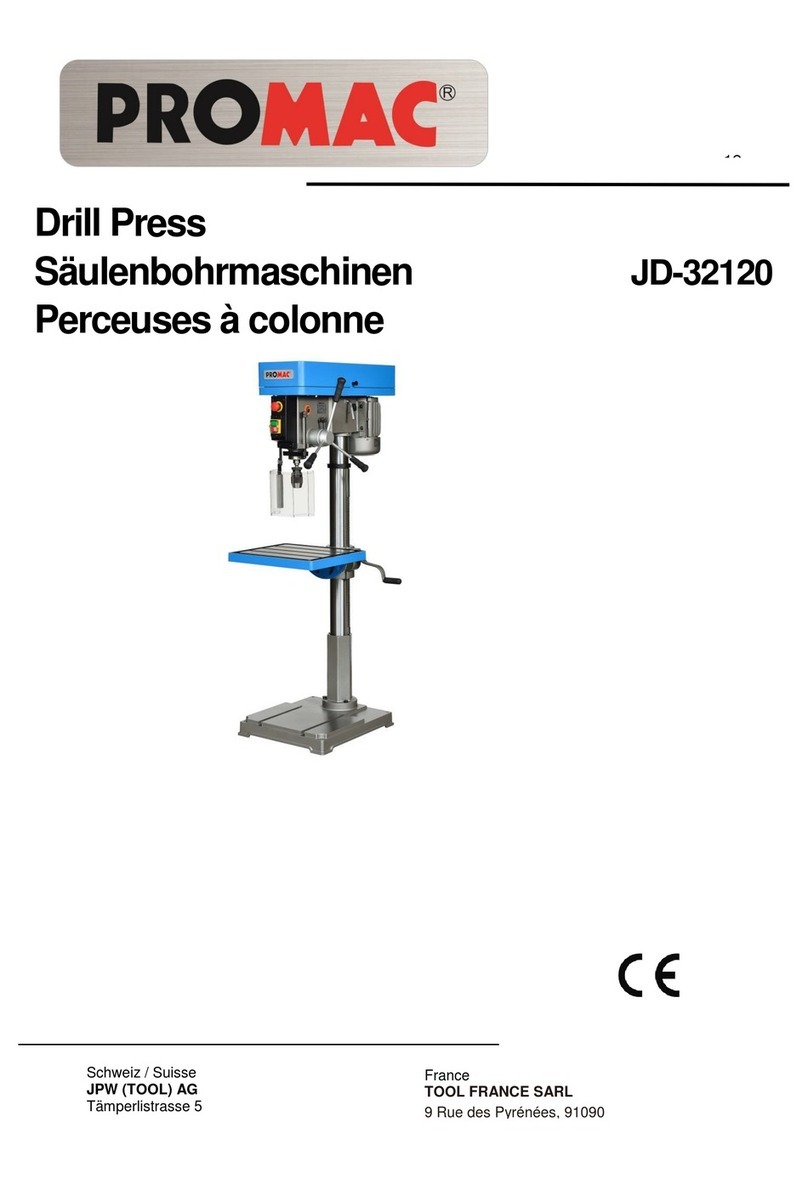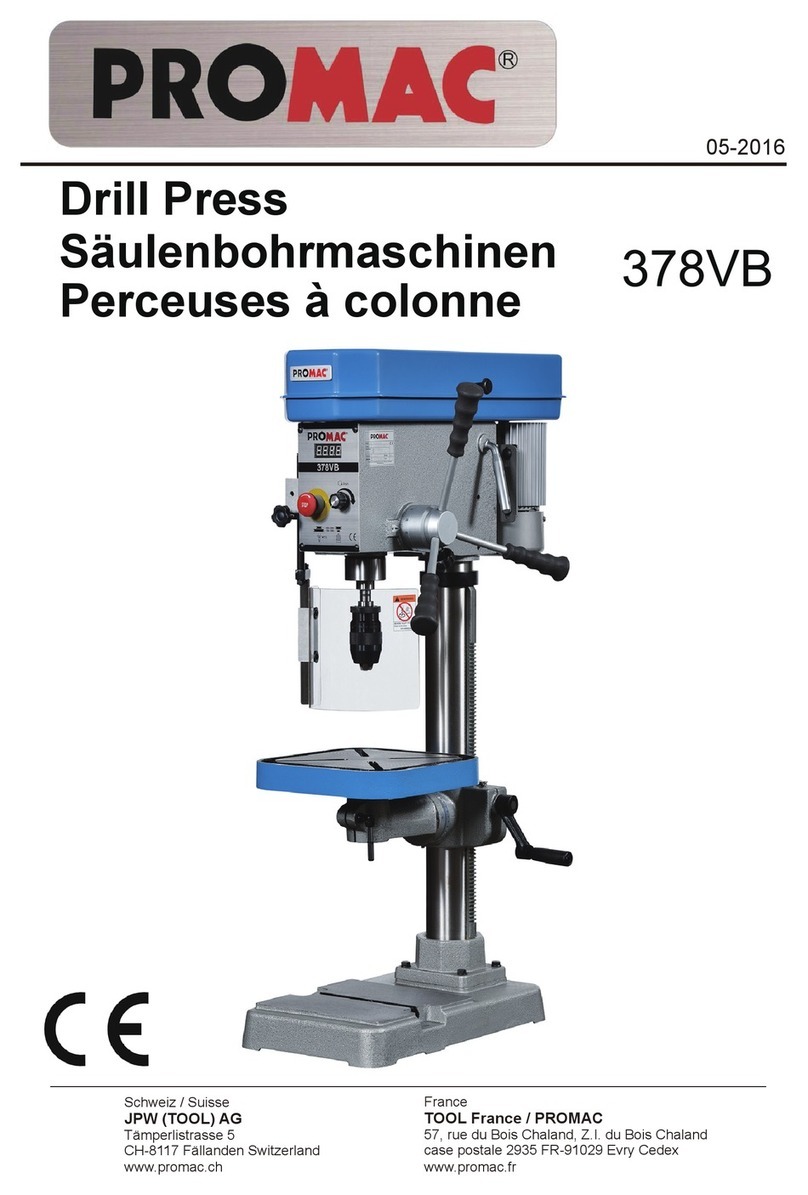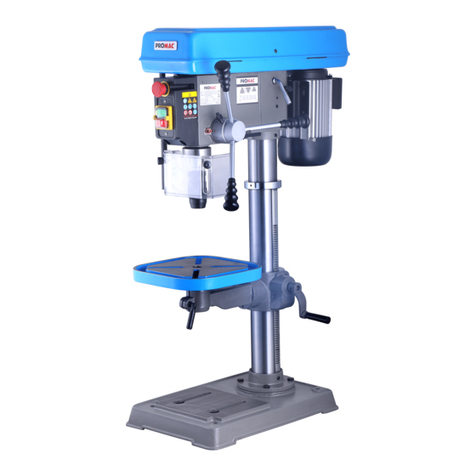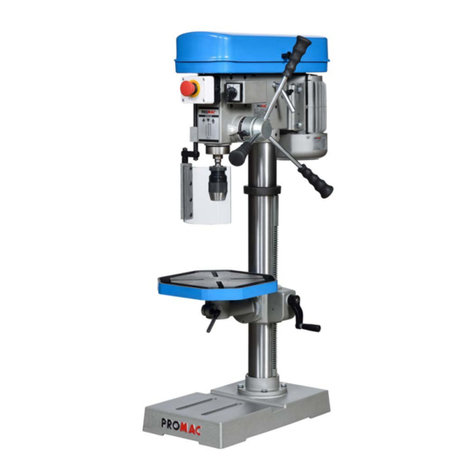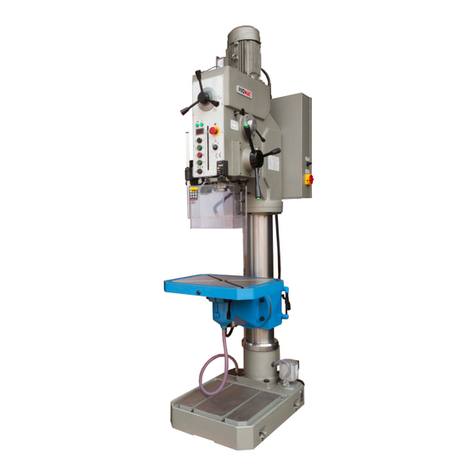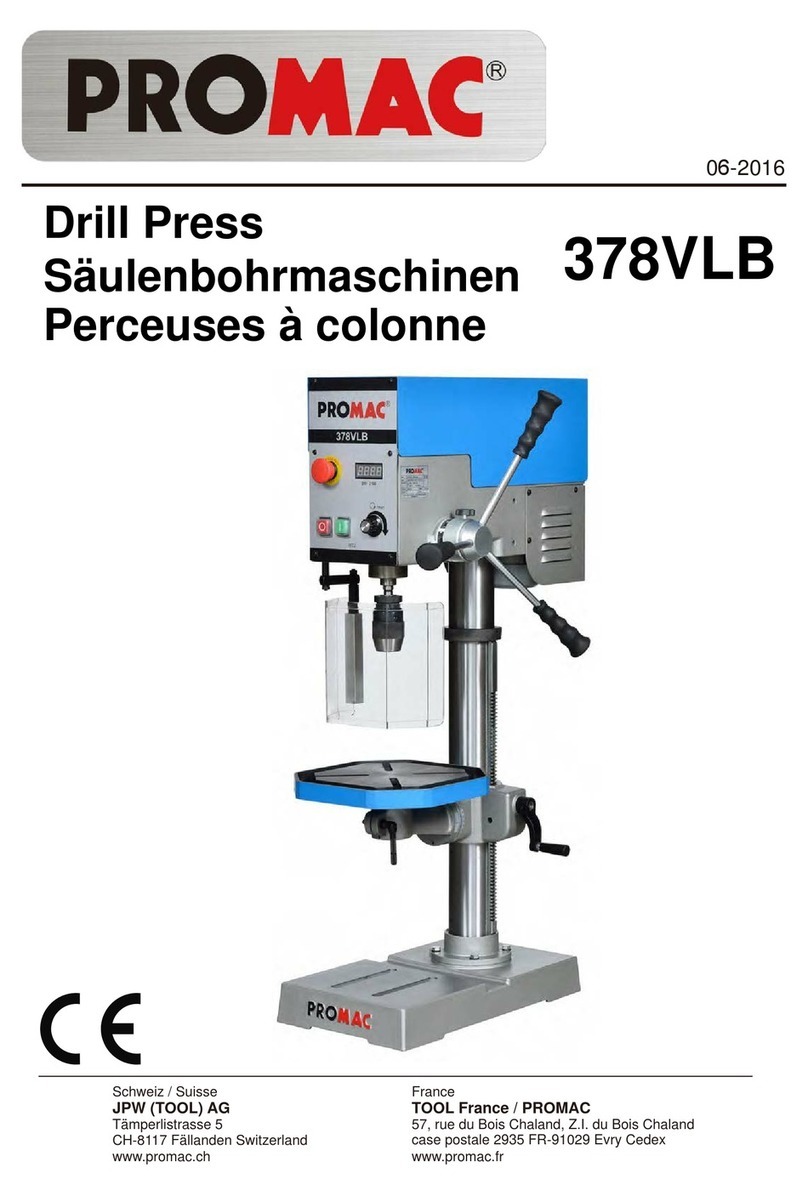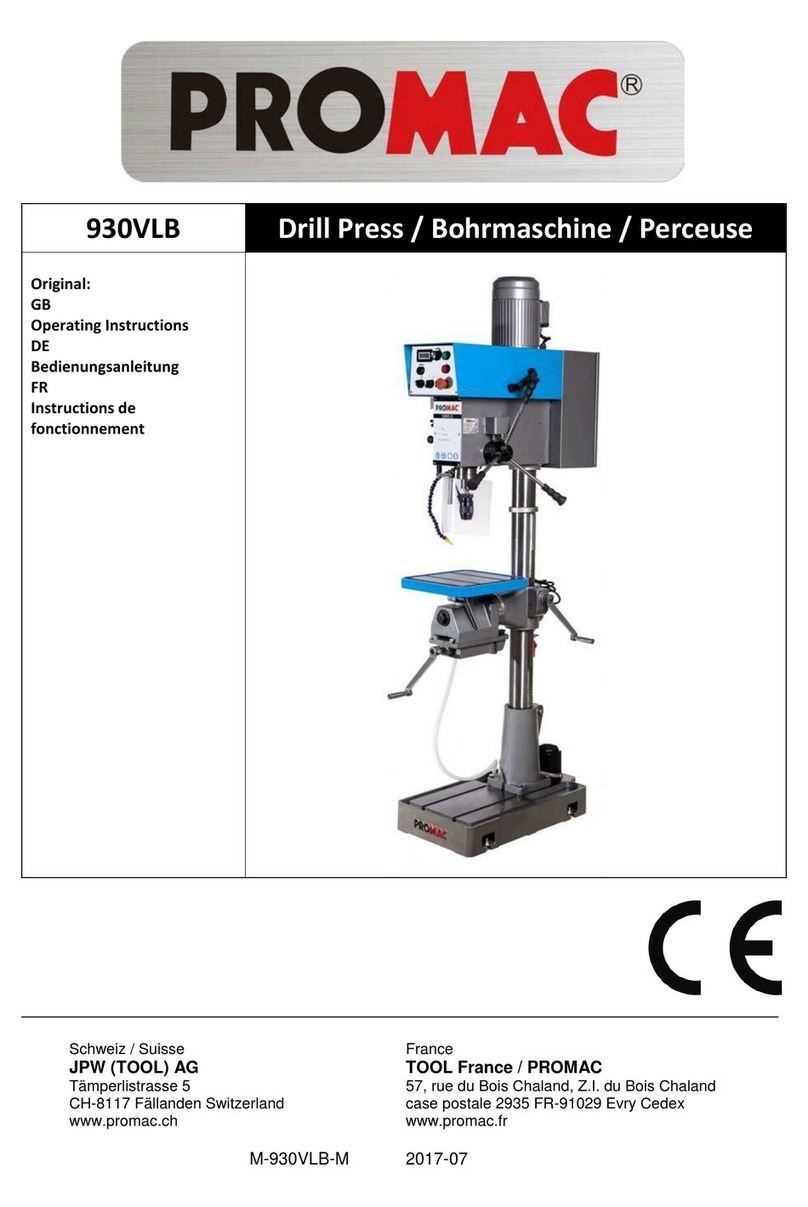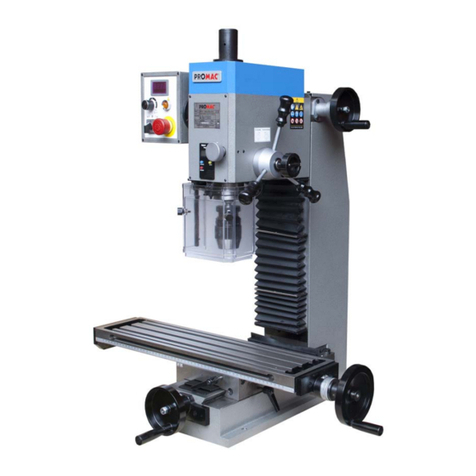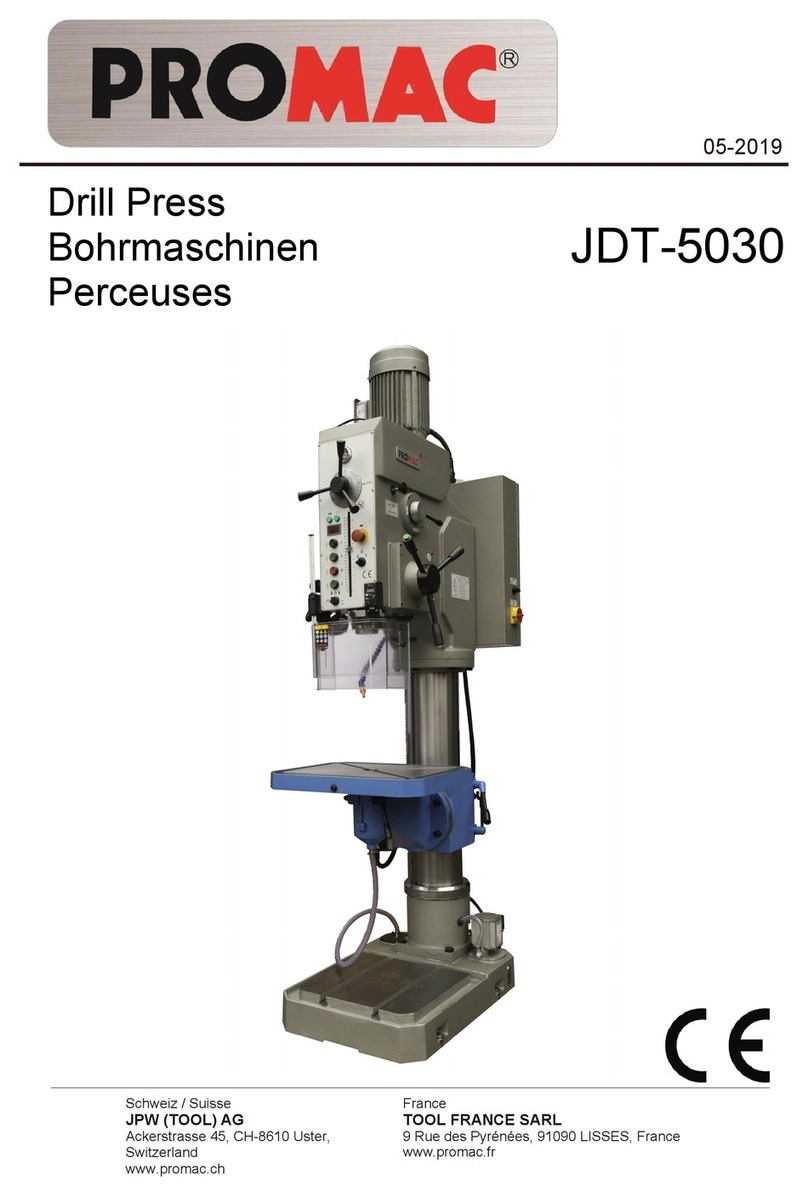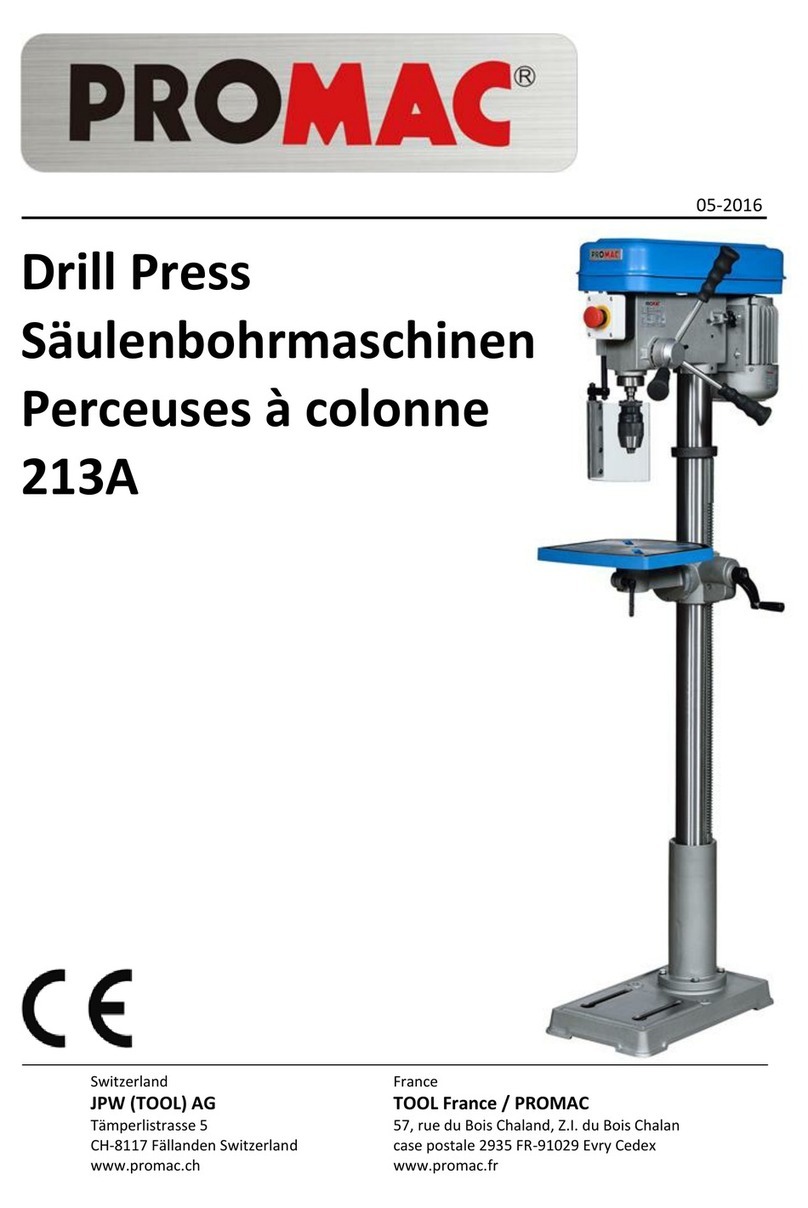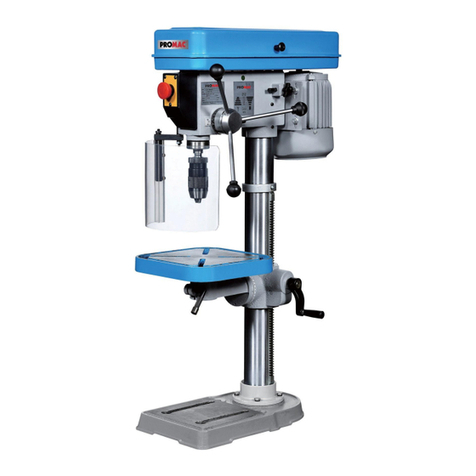
3
GENERAL SAFETY INSTRUCTIONS
Note: Non-observance of these instructions can result in severe injury.
As with all machinery, there are specific hazards involved with the operation and handling of the machine.
Careful operation of the machine and correct machine handling will effectively lower the risk of possible
accidents. If the usual precautions are disregarded, a risk of accidents for the operator cannot be avoided.
The machine was designed for the specified kinds of use only. We strongly recommend not to operate a
machine that was modified and not to use the machine in a manner it was not designed for.
If you have any questions regarding the operation of this machine and the operating instructions do not give
the required information, please contact your distributor.
GENERAL RULES FOR SAFE HANDLING OF MACHINERY
1. For your own safety, always read the operating instructions before starting the machine. Make yourself
familiar with the machine, its operation and operating restrictions as well as with its specific hazards.
2. Keep safety guards in place and in proper working order.
3. Always connect any electrically operated machines equipped with a grounding-type mains plug to a
grounding-type socket. If adapter plugs without earthing contact are used, a grounding-type connection
on the machine must be carried out by all means. Never operate the machine without grounding-type
connection (earthing).
4. Always remove any loose clamping levers or wrenches from the machine. Make it a habit to check that all
loose operating elements have been removed before turning the machine on.
5. Keep the working area free from obstacles. Working areas and working surfaces blocked by obstacles will
virtually provoke accidents.
6. Do not operate the machine in hazardous working environment. Do not operate power driven machinery
in damp or wet rooms or expose them to rain. Always keep working surfaces and areas well lighted.
7. Keep children and visitors away from the machine. Make sure children and visitors keep a safe distance
from the working area.
8. Safeguard the workshop and the working room against unauthorized access. Attach child-proof locks such
as lockable latches, lockable main switches, etc.
9. Do not overload the machine. Machine performance and machine safety are enhanced when the
machine is operated within the range of performance it was designed for.
10. Do not use any attachments for works they were not designed for.
11. Wear appropriate working clothes; avoid wearing loose clothes, gloves, scarves, rings, necklaces,
bracelets or other jewelry. They might get caught in moving machine components. Wear shoes with anti-
slip soles. Wear a working cap that completely covers long hair.
12. Always wear safety glasses. Observe the accident prevention regulations. Moreover, wear a dust mask for
works with heavy dust contamination.
13. Safely clamp the workpieces. Always use a vise or clamps to hold the workpiece. It is safer than using your
hands and both hands will be free to operate the machine.
